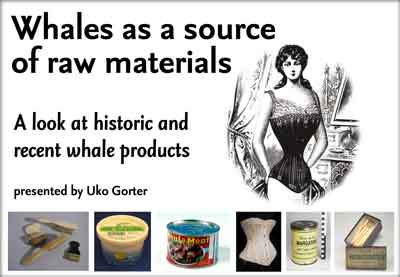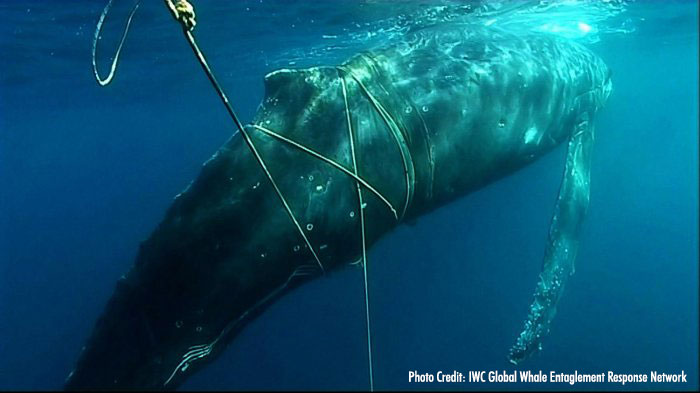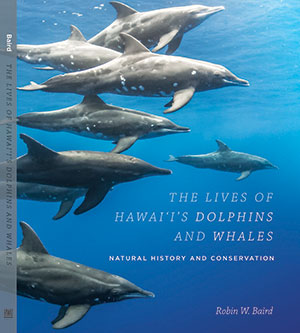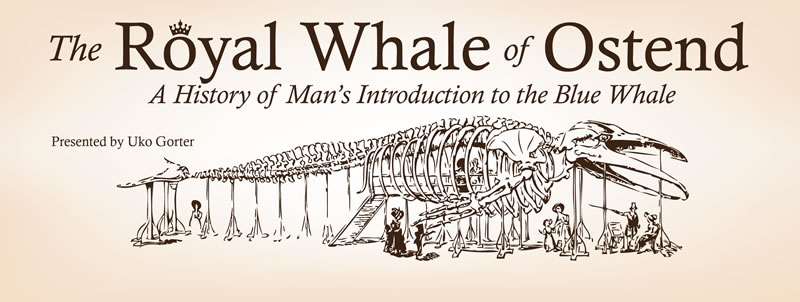2016-2017 Speaker Series
The Puget Sound Chapter of the American Cetacean Society would like to sincerely thank the following people for giving a presentation at one of our monthly Speaker Series meetings.
Click on any of the Abstract links for a summary and a brief bio about the talk Many abstracts also contain additional related resources.
21 June 2017 - Joe Olson
10 Days at Sea with the Wild Dolphin Project ... Abstract
In July of 2012, Joe Olson brought a high frequency, autonomous recording device, called an Acousonde, to the Bahamas to assist Denise Herzing and the Wild Dolphin Project in their research on wild dolphin behavior and communication. This talk will be a casual discussion of those ten days aboard the RV Stenella.
Joe Olson is the President of Cetacean Research Technology, which he founded in 1994, where he builds hydrophone systems for whale and dolphin research, as well as other underwater acoustics applications. He also restarted the Puget Sound Chapter of the American Cetacean Society in 1999 and served as its president until 2003.
17 May 2017
internal meeting ...
abstract
speaker ipsem
19 April 2017 - Uko Gorter, Natural History Illustrator
Whales as a source of raw materials: A look at historic and recent whale products Abstract

The lure of hunting whales in the past can be explained when we consider the high value placed on the raw materials that could be extracted from them. While in earlier times the whales were stripped of blubber and whalebone (baleen), and the rest of the carcass discarded at sea, technological advances in the twentieth century made it possible to utilize the entire whale. From whalebone corsets to spermaceti candles, from military explosives to cattle feed, we'll take a closer look at the extensive and strange variety of whale products derived from these leviathans. We will have a sizeable collection of historic and recent whale products on hand (which you may touch), each with their own interesting and disturbing story.
Born in Arnhem, Holland, Uko Gorter is a scientific and natural history illustrator, specializing in marine mammals and marine fauna. Uko joined the American Cetacean Society in 2001, and is the president of the Puget Sound Chapter.
Join us to learn about how SR3 (sealifer3.org - Sealife Response, Rehabilitation and Research) is working to improve the health and welfare of Pacific Northwest marine animals. Entanglement response specialist, Doug Sandilands, will provide a brief overview of SR3's mission and vision and then share information on how entanglement response efforts in the US and elsewhere exist not only to improve the welfare of individual whales, but also strive to gain an understanding of entanglements, with the goal of prevention.
Doug Sandilands is a leader in the field of whale entanglement response and began his career working with the Vancouver Aquarium Marine Science Center in 2000.
During his time with the aquarium and as a founding member of Cetus Research & Conservation Society, a Canadian nonprofit, he worked to build capacity in British Columbia to respond to entangled whales. For ten years Doug worked in the Cetacean Research Lab with the B.C. Cetacean Sightings Network growing the network to nearly 2,000 contributors submitting over 40,000 sightings.
In 2011 Doug became the operations manager for the Marine Entanglement Response team at the Center for Coastal Studies in Provincetown, MA. Over the next five years he responded with the MAER team to forty large whale entanglements and thirty-five leatherback sea turtle entanglements. Doug also assisted with humpback and fin whale studies (collecting photo ID, biopsy, breath samples and assisting with tagging projects). As an authorized responder with the Large Whale Entanglement Response Network Doug helped to train nearly sixty other large whale entanglement responders.

15 February 2017 - Dawn Noren
Comparative and Cumulative Energetic Costs of Odontocete Responses to Anthropogenic Disturbance ... Abstract
Odontocetes (toothed whales) respond to vessels and anthropogenic noise by modifying vocal behavior, surface active behaviors, dive patterns, swim speed, direction of travel, and activity budgets. Exposure scenarios and behavioral responses vary across odontocetes. Results from a study that combines physiology, behavior, and energetics to better understand the cumulative energetic impacts of vessel and acoustic disturbance on killer whales, bottlenose dolphins, harbor porpoises, and beaked whales will be presented. This work provides a powerful tool to investigate the biological significance of multiple behavioral responses that are likely to occur in response to anthropogenic disturbance.
Dr. Dawn Noren is a physiological ecologist whose primary research interests include: 1) energetics and metabolism, 2) assessment of body condition, 3) diving physiology, and 4) anthropogenic impacts. Dawn joined the Northwest Fisheries Science Center in May of 2003. Previously, Dawn was a National Research Council (NRC) Postdoctoral Research Associate at the National Marine Mammal Laboratory at the NOAA NMFS Alaska Fisheries Science Center, Seattle, WA, where she conducted research on Steller sea lion juvenile body condition, fasting physiology, and diving. Dawn received a Ph.D. in Ecology and Evolutionary Biology from the University of California, Santa Cruz. Her dissertation focused on elephant seal body condition, thermoregulation, and fasting physiology. She also earned an M.S. in Marine Sciences from the University of California, Santa Cruz. For her master's thesis, she investigated the physiology of diving and thermoregulation in bottlenose dolphins. Dawn earned her B.S. in Biological Sciences with and emphasis in Marine Sciences from the University of Maryland. Dawn's current research includes killer whale energetics and prey requirements, impacts of vessel presence on Southern Resident killer whale behavior and energetics, cetacean diving physiology, and contaminant transfer dynamics in delphinids.
18 January 2017 - Scott Veirs
Listening for whales: a discussion of hydrophone networks — past and future ... Abstract
The spread of the Internet, computing infrastructure, and "ocean observatories" are enabling a new human connection with the oceans and the whales within them. I will briefly review extant hydrophone networks, best practices, and exciting new technologies, and then articulate my vision for the future of the "Salish Sea Hydrophone Network" (orcasound.net) and other hydrophones in the Northeast Pacific.
Dr. Scott Veirs is a marine environmental scientist specializing in bioacoustics. Trained as an Earth Systems Scientist at Stanford University (BS, 1992) and an Oceanographer at the University of Washington (MS, PhD, 2003), Scott has helped administer the Salish Sea Hydrophone Network since 2005. In 2016 he co-authored a study on the underwater noise created by commercial ships and helped assess the acoustic impacts of proposed developments along the coast of British Columbia. He is based in Seattle where he coaches ultimate, builds and sails boats, and enjoys skiing and backpacking with his family.
16 November 2016 - Robin W. Baird, Cascadia Research Collective
Oasis in a desert sea: the lives of Hawai'i’s dolphins and whales ... Abstract

Although humpback whales and spinner dolphins have received most of the attention in Hawai‘i, there are 25 species of whales and dolphins that have been found in Hawaiian waters! The islands themselves have created an oasis in the central Pacific, home to 11 different species of whales and dolphins. Robin Baird, author of the new book The Lives of Hawai'i’s Dolphins and Whales: Natural History and Conservation, will share information and images from the book on many different species of whales and dolphins in Hawaiian waters, including migratory blue whales, resident Bryde’s whales, endangered false killer whales, deep-diving Cuvier’s and Blainville’s beaked whales, and others, and will talk about how we’ve learned about these species, including acoustics, photo-identification, genetics, and satellite tagging.
Robin W. Baird is a research biologist with Cascadia Research Collective, based in Olympia, Washington, and an affiliate faculty at the Hawai‘i Institute of Marine Biology. Robin has been studying whales and dolphins since 1986, and received his PhD from Simon Fraser University in 1994, focusing on the foraging behavior of mammal-eating killer whales. Most of his research for the last 18 years has focused on Hawaiian odontocetes, assessing population structure, estimating abundance, examining habitat use and behavior, and assessing human interactions including fisheries impacts and impacts from Navy sonar. He has authored or co-authored over 100 peer-reviewed papers and is the author of The Lives of Hawai‘i’s Dolphins and Whales: Natural History and Conservation, published by the University of Hawai‘i Press (2016).
19 October 2016 - Kim Parsons, NMML
Paternity, prey and population structure: insights into cetacean populations through genetics ... Abstract
The watery world of cetaceans often leaves us with many questions that are difficult to answer through direct observation. Fortunately, recent advances in molecular genetic techniques provides many new approaches for exploring aspects of cetacean behavior and ecology that previously seemed intractable. Here we will explore the genetic toolkit and examine the wealth of data that we have gained through molecular approaches, highlighted through examples of recent studies on species ranging from killer whales to porpoises.
Kim Parsons is a research biologist contracted with NMML's Cetacean Assessment Ecology Program (CAEP). Her primary research interests concern the social ecology and genetic structuring of marine mammal populations, particularly as they pertain to conservation and management objectives. Currently, Kim is working on several collaborative projects including 1) an assessment of the population genetic structure of killer whales in the northern North Pacific and 2) an evaluation of dynamic survival rates and environmental covariates for the Southern Resident killer whale population.
21 September 2016 - Uko Gorter, ACS/PS Chapter President
The Royal Whale of Ostend, A History of Man's Introduction to the Blue Whale ... Abstract
Blue whales (Balaenoptera musculus) loom large in our collective imagination. It is the largest animal ever to have lived on earth. Yet many of us have never seen one. How did we get to know the blue whale? When did we lift the, as Melville quotes the Surgeon Beale, "impenetrable veil covering our knowledge of the cetacea"?
The remarkable story of the Royal Whale of Ostend wonderfully serves as a way to tell the broader story of how we, humans, were introduced to the blue whale.
This regal Ostendian mystery beast defied early naturalists and led to fierce polemics in determining what species it belonged to. No other cetacean has ever endured such a dramatic posthumous migration as a sensational anatomical monument, as did the Royal Whale of Ostend. Along the way, we'll meet the interesting cast of human characters who have played a role this exceptional tale, notably: Herman Kessels, Joseph Dubar, Jacob van Breda, George Cuvier, Robert Sibbald, Linnaeus, Pierre-Joseph van Beneden, and many, many others.


